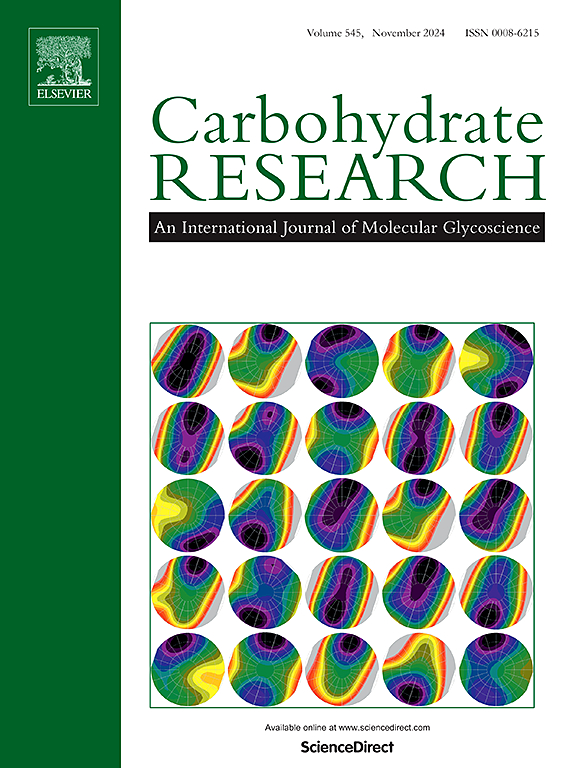Analysing the apoptotic potential of green synthesized Nyctanthes arbor-tristis chitosan nanoparticles in MDA-MB-231 and SKOV3 cell lines
IF 2.4
3区 化学
Q3 BIOCHEMISTRY & MOLECULAR BIOLOGY
引用次数: 0
Abstract
Gynecological tumors are highly aggressive cancers in women, often treated with conventional treatments that can cause significant side effects. This study focuses on the preparation of chitosan nanoparticles from Nyctanthes arbor-tristis leaves, which possess anti-tumor properties, to address and overcome these issues. The successfully synthesized nanoparticles were characterized by UV-spectroscopy, DLS, TEM, and FTIR spectroscopy to analyze their physiochemical properties. In vitro studies, including cytotoxicity and scratch wound healing assays, along with staining and qRT-PCR, revealed the nanoparticles' anticancer efficacy against breast and ovarian cancer cells. The formation of Nat-CSNPs showed an absorbance peak at 221 nm, a particle size range of 41–56 nm with a spherical shape, polydispersity, and a positive surface charge. FTIR spectroscopy demonstrated the presence of functional groups associated with the synthesized Nat-CSNPs. It exhibited dose-dependent cytotoxicity, with IC50 values of 62.40 μg/ml for MDA-MB-231 and 44.7 μg/ml for SKOV3 cells. Further assays such as wound healing assay, and DAPI/AO/EtBr staining demonstrated their antiproliferative and apoptotic effects on MDA-MB-231 and SKOV3 cells. Induction of apoptosis by the chitosan-nanoparticle via upregulation of the pro-apoptotic genes (Bax, Cas3, Cas9) and downregulation of antiapoptotic genes (Bcl2) was assessed using qRT-PCR analysis. In vivo acute toxicity assessments of Nat-CSNPs on Danio rerio revealed no significant impact on glucose levels or AST, ALT, and AChE activity, indicating low toxicity. These findings underscore the potent anticancer effects of Nat-CSNPs, particularly inducing apoptosis in MDA-MB-231 and SKOV3 cell lines. While demonstrating low toxicity in Danio rerio, Nat-CSNPs are considered a promising novel anti-cancer drug for breast and ovarian cancer treatment.

分析绿色合成的山茱萸壳聚糖纳米颗粒对MDA-MB-231和SKOV3细胞株的凋亡潜力。
妇科肿瘤是一种高度侵袭性的女性癌症,通常采用可能导致严重副作用的传统治疗方法。为了解决和克服这些问题,本研究将以山楂叶为原料制备具有抗肿瘤特性的壳聚糖纳米颗粒。采用紫外光谱、DLS、TEM、FTIR等方法对合成的纳米颗粒进行了表征,并对其理化性质进行了分析。体外研究,包括细胞毒性和划伤愈合试验,以及染色和qRT-PCR,揭示了纳米颗粒对乳腺癌和卵巢癌细胞的抗癌功效。在221 nm处形成吸光度峰,粒径范围为41 ~ 56 nm,呈球形,具有多分散性,表面带正电荷。FTIR光谱显示了与合成的nat - csnp相关的官能团的存在。MDA-MB-231的IC50值为62.40 μg/ml, SKOV3的IC50值为44.7 μg/ml。进一步的实验如伤口愈合实验和DAPI/AO/EtBr染色显示了它们对MDA-MB-231和SKOV3细胞的抗增殖和凋亡作用。采用qRT-PCR分析,观察壳聚糖纳米颗粒通过上调促凋亡基因(Bax、Cas3、Cas9)和下调抗凋亡基因(Bcl2)诱导细胞凋亡的作用。体内急性毒性评估显示,对小鼠血糖水平或谷丙转氨酶、谷丙转氨酶和乙酰胆碱酯酶活性无显著影响,毒性较低。这些发现强调了nat - csnp的有效抗癌作用,特别是诱导MDA-MB-231和SKOV3细胞系的凋亡。Nat-CSNPs在小鼠中表现出低毒性,被认为是治疗乳腺癌和卵巢癌的一种有前景的新型抗癌药物。
本文章由计算机程序翻译,如有差异,请以英文原文为准。
求助全文
约1分钟内获得全文
求助全文
来源期刊

Carbohydrate Research
化学-生化与分子生物学
CiteScore
5.00
自引率
3.20%
发文量
183
审稿时长
3.6 weeks
期刊介绍:
Carbohydrate Research publishes reports of original research in the following areas of carbohydrate science: action of enzymes, analytical chemistry, biochemistry (biosynthesis, degradation, structural and functional biochemistry, conformation, molecular recognition, enzyme mechanisms, carbohydrate-processing enzymes, including glycosidases and glycosyltransferases), chemical synthesis, isolation of natural products, physicochemical studies, reactions and their mechanisms, the study of structures and stereochemistry, and technological aspects.
Papers on polysaccharides should have a "molecular" component; that is a paper on new or modified polysaccharides should include structural information and characterization in addition to the usual studies of rheological properties and the like. A paper on a new, naturally occurring polysaccharide should include structural information, defining monosaccharide components and linkage sequence.
Papers devoted wholly or partly to X-ray crystallographic studies, or to computational aspects (molecular mechanics or molecular orbital calculations, simulations via molecular dynamics), will be considered if they meet certain criteria. For computational papers the requirements are that the methods used be specified in sufficient detail to permit replication of the results, and that the conclusions be shown to have relevance to experimental observations - the authors'' own data or data from the literature. Specific directions for the presentation of X-ray data are given below under Results and "discussion".
 求助内容:
求助内容: 应助结果提醒方式:
应助结果提醒方式:


